 If your financial situation has changed, you might be interested in refinancing your mortgage. In general, refinancing means that you will replace your current mortgage with a new one. The process of refinancing is similar to the process of applying for a mortgage, but you need to think about your goals during the refinancing process. That way, you can put yourself in the best financial position to be successful.
If your financial situation has changed, you might be interested in refinancing your mortgage. In general, refinancing means that you will replace your current mortgage with a new one. The process of refinancing is similar to the process of applying for a mortgage, but you need to think about your goals during the refinancing process. That way, you can put yourself in the best financial position to be successful.
Why RefinanceYour Mortgage?
There are several reasons why you might be interested in refinancing your mortgage. For example, you might want to tap into the equity in your home to cover another major financial expense. Or, if interest rates have gone down since you first took out your mortgage, you might want to save money by replacing your current loan with one that has a lower interest rate. You might also want to refinance your house in an effort to pay off the loan more quickly.
How Does The Refinancing Process Work?
During the refinancing process, your lender will do a deep dive into your financial history. They will take a look at your credit history and credit score. They will also analyze your payment history on your existing loan. Your lender will also take a look at your income, employment history, and total equity you have in your home. Your lender will also look at other sources of debt, such as a car loan or student loan.
Are There Any Drawbacks?
There are a few drawbacks you need to know. For example, if interest rates have gone up since you took out your mortgage, refinancing might not be the best choice. Furthermore, you may have to pay closing expenses again, which can be expensive. Finally, if you withdraw equity from your house, it can cause your monthly payment to go up; it could also lengthen the term of your loan by several years.
You should think carefully about whether refinancing your house is the best financial move. You need to consider your financial situation along with the current conditions in the real estate market. If you reach out to an expert, you can figure out what refinancing your home might mean for your mortgage.


 Although interest rates continue to rise, they are still low and you have probably heard that refinancing could help you save money on your home loan. Even though you are probably focused on current mortgage interest rates, feverishly comparing them to your own interest rate, you need to check your financials first. What are a few important indicators of your financial health that you need to check before you go through the refinancing process?
Although interest rates continue to rise, they are still low and you have probably heard that refinancing could help you save money on your home loan. Even though you are probably focused on current mortgage interest rates, feverishly comparing them to your own interest rate, you need to check your financials first. What are a few important indicators of your financial health that you need to check before you go through the refinancing process? If you decide to go through the refinancing process, there are several options available. One of the most popular options is a cash-out refinance. Essentially, you capitalize on the difference between current interest rates and the interest rate on your home loan to keep your payments the same while also drawing equity out of your home in the form of cash. You can use this money to fund your retirement, complete home repairs, or do a renovation project. Even though you can do just about anything you want with this cash, what do you need to know about a cash-out refinance and taxes?
If you decide to go through the refinancing process, there are several options available. One of the most popular options is a cash-out refinance. Essentially, you capitalize on the difference between current interest rates and the interest rate on your home loan to keep your payments the same while also drawing equity out of your home in the form of cash. You can use this money to fund your retirement, complete home repairs, or do a renovation project. Even though you can do just about anything you want with this cash, what do you need to know about a cash-out refinance and taxes? If you want to save money on your mortgage, now might be a great time to refinance. When you refinance your home loan, you replace the existing mortgage with a different one. You can refinance your home to withdraw cash, shorten the term of the loan, or reduce your interest rate. Not everyone can refinance the house, so take a look at a few key rules you need to follow to qualify for a refinance.
If you want to save money on your mortgage, now might be a great time to refinance. When you refinance your home loan, you replace the existing mortgage with a different one. You can refinance your home to withdraw cash, shorten the term of the loan, or reduce your interest rate. Not everyone can refinance the house, so take a look at a few key rules you need to follow to qualify for a refinance. If you want to save money on your home loan, you might be thinking about refinancing your mortgage. You might be able to replace your existing mortgage with a home loan that has a lower interest rate. Even a single point reduction in your interest rates could save you tens of thousands of dollars over the life of your loan. Before you refinance, be sure to ask about closing costs. Because you are replacing your existing home loan with a new one, you may incur some closing expenses. On the other hand, you could also have negative closing costs. In this case, you might get paid to refinance. How does this work?
If you want to save money on your home loan, you might be thinking about refinancing your mortgage. You might be able to replace your existing mortgage with a home loan that has a lower interest rate. Even a single point reduction in your interest rates could save you tens of thousands of dollars over the life of your loan. Before you refinance, be sure to ask about closing costs. Because you are replacing your existing home loan with a new one, you may incur some closing expenses. On the other hand, you could also have negative closing costs. In this case, you might get paid to refinance. How does this work?  You might have heard that more people are refinancing these days. During the refinancing process, you essentially take your current home loan and replace it with a different one. You can reduce your mortgage payments, shorten the life of your loan, or withdraw cash you can use for other purposes. What are a few of the signs that indicate you should consider refinancing?
You might have heard that more people are refinancing these days. During the refinancing process, you essentially take your current home loan and replace it with a different one. You can reduce your mortgage payments, shorten the life of your loan, or withdraw cash you can use for other purposes. What are a few of the signs that indicate you should consider refinancing?  If you want to save money on your home loan, you may want to consider refinancing. During the refinancing process, you will replace your existing home loan with a new one; however, you want to secure the lowest interest rate possible. How can you get a better rate on your mortgage during the refinancing process?
If you want to save money on your home loan, you may want to consider refinancing. During the refinancing process, you will replace your existing home loan with a new one; however, you want to secure the lowest interest rate possible. How can you get a better rate on your mortgage during the refinancing process?  There are many people who are thinking about refinancing their homes. For example, some people may be interested in reducing their monthly payments, while other people may be interested in tapping into the value of the home to fund a home improvement project. What is the relationship between property values and refinancing? There are several important points to keep in mind.
There are many people who are thinking about refinancing their homes. For example, some people may be interested in reducing their monthly payments, while other people may be interested in tapping into the value of the home to fund a home improvement project. What is the relationship between property values and refinancing? There are several important points to keep in mind. 
